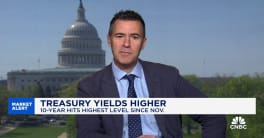Pending home sales kicked off 2016 by declining nationally and in three of the country's four regions. The National Association of Realtors® (NAR) said that its Pending Home Sales Index (PHSI) declined 2.5 percent in January to 106.0. The indicator, based on signings for home purchase contracts was higher than the index in January 2015 by 1.4 percent.
The unexpected decline - the consensus of analysts was for a 0.5 percent increase - was offset a bit by an upward revision in the December index which went from the 106.8 originally estimated, a 0.1 percent increase, to 108.7, a 0.9 percent gain.
NAR said the index has increased year-over-year for 17 straight months but the January gain was second only to that of September 2014 as the smallest over that period. The average for the index for all of 2015, 108.9, was the highest since it hit 111.7 in 2006 and it was 8.0 percent higher than the average in 2014.
Lawrence Yun, NAR chief economist, says a myriad of reasons likely contributed to January contract signings subsiding in most of the country. "While January's blizzard possibly caused some of the pullback in the Northeast, the recent acceleration in home prices and minimal inventory throughout the country appears to be the primary obstacle holding back would-be buyers," he said. "Additionally, some buyers could be waiting for a hike in listings come springtime."
NAR noted that existing-home sales in January measured by closed transactions were 11.0 higher than the previous January, the largest year-over-year gain since July 2013, but price growth quickened to 8.2 percent - the largest annual gain since April 2015 (8.5 percent).
While the hope is that appreciating home values will start to entice more homeowners to sell, Yun says supply and affordability conditions won't meaningfully improve until homebuilders start ramping up production - especially of homes at lower price points.
"First-time buyers in high demand areas continue to encounter instances where their offer is trumped by cash buyers and investors," adds Yun. "Without a much-needed boost in new and existing-homes for sale in their price range, their path to homeownership will remain an uphill climb."
The South was the only region to post any increase in pending sales. The PHSI for the region inched up 0.3 percent to an index of 121.1 in January but remained 1.3 percent lower than last January.
Contract signings in the Northeast declined 3.2 percent to 94.5 but were still 10.9 percent above a year ago. The index fell 4.9 percent in the Midwest to 101.1 but remained 1.4 higher than the previous January. The index in the West decreased 4.5 percent to 96.5. It is still 0.4 percent higher on an annual basis.
Existing-homes sales this year are forecast to be around 5.38 million, an increase of 2.5 percent from 2015. The national median existing-home price for all of this year is expected to increase between 4 and 5 percent. In 2015, existing-home sales increased 6.3 percent and prices rose 6.8 percent.
The Pending Home Sales Index is based on a large national sample that typically represents about 20 percent of transactions for existing-home sales. A sale is listed as pending when the contract has been signed but the transaction has not closed, though the sale usually is finalized within one or two months of signing.
An index of 100 is equal to the average level of contract activity during 2001, which was the first year to be examined. By coincidence, the volume of existing-home sales in 2001 fell within the range of 5.0 to 5.5 million, which is considered normal for the current U.S. population.







